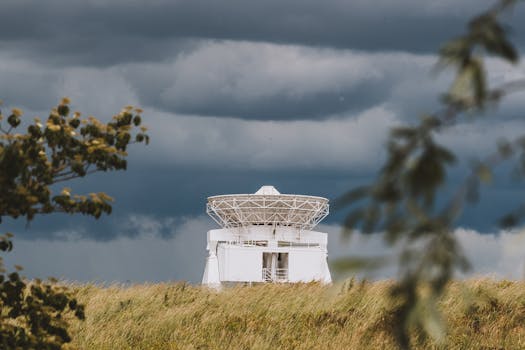
GEO satellites, or Geostationary satellites, are a type of satellite that orbits the Earth at an altitude of approximately 36,000 kilometers, remaining stationary relative to a fixed point on the planet. GEO satellites have been a cornerstone of global communications for decades, providing a wide range of services including television broadcasting, telecommunications, and weather forecasting. At the beginning of GEO satellites research, the concept of a geostationary orbit was first proposed by science fiction writer Arthur C. Clarke in 1945, and the first geostationary satellite, Syncom 2, was launched in 1963.
The geostationary orbit is a unique and valuable asset for satellite communications, as it allows for continuous coverage of a specific region of the Earth’s surface. This is because the satellite’s orbital period is synchronized with the Earth’s rotational period, resulting in the satellite appearing stationary in the sky. This makes it ideal for applications such as telecommunications, where a constant and reliable signal is required. The use of GEO satellites has also enabled the development of modern technologies such as GPS, which relies on a network of satellites in medium Earth orbit to provide location information.
One of the primary advantages of GEO satellites is their ability to provide high-gain antennas, which enable them to transmit and receive signals with high power and sensitivity. This makes them well-suited for applications such as television broadcasting, where high-quality signals are required to transmit video and audio content. Additionally, GEO satellites can be used to provide broadband internet access to remote or underserved areas, where traditional terrestrial infrastructure may not be available. The launch of GEO satellites has also been used for military communications, navigation, and weather forecasting.
Applications of GEO Satellites
GEO satellites have a wide range of applications, including television broadcasting, telecommunications, weather forecasting, and navigation. They are also used for military communications, Earth observation, and scientific research. The use of GEO satellites has enabled the development of modern technologies such as GPS, which relies on a network of satellites in medium Earth orbit to provide location information. The applications of
Benefits and Challenges of GEO Satellites
The benefits of GEO satellites include their ability to provide continuous coverage of a specific region, high-gain antennas, and reliable signals. However, they also pose several challenges, including the risk of collisions with other satellites or space debris, interference from other satellites or terrestrial sources, and the high cost of launching and maintaining them. Despite these challenges, GEO satellites remain a vital part of modern telecommunications and will continue to play an important role in the development of new technologies and services.
Future of GEO Satellites
The future of GEO satellites is likely to be shaped by advances in technology, changes in market demand, and the development of new services and applications. One of the key trends in the GEO satellite industry is the increasing use of high-throughput satellites, which offer higher bandwidth and faster data transfer rates. Another trend is the development of smaller, more agile satellites, which can be launched at lower cost and offer greater flexibility. As the demand for satellite communications continues to grow, GEO satellites will remain a vital part of the global telecommunications infrastructure.
In conclusion, GEO satellites play a vital role in global communications, providing a wide range of services including television broadcasting, telecommunications, and weather forecasting. Their unique characteristics, such as their geostationary orbit and high-gain antennas, make them well-suited for applications that require continuous coverage and reliable signals. As technology continues to evolve, GEO satellites will remain an essential part of modern telecommunications, enabling the development of new services and applications that transform the way we live and work.



